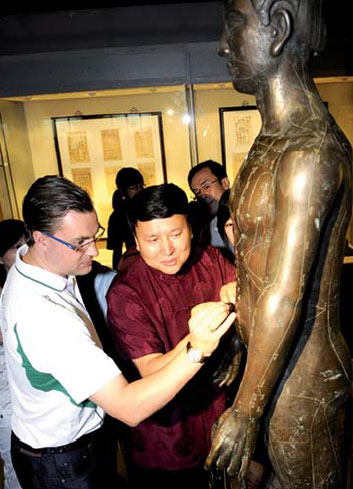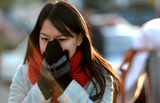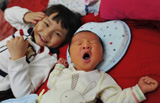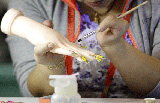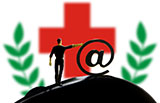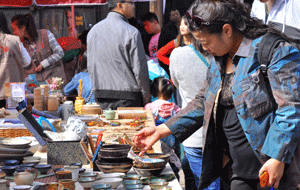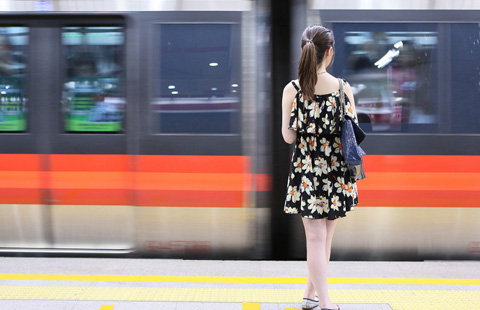Museum depicts the long history of Chinese healing
By Su Zhou (China Daily) Updated: 2014-08-20 07:19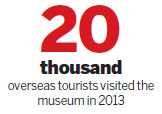
From a venue for professional exchanges to popular tourist destination, Yushengtang Traditional Chinese Medicine Museum in Beijing has witnessed the spreading popularity of traditional Chinese medicine overseas.
Over the past 10 years, Bai Yang, the museum curator, has communicated with foreign scholars and physicians, especially from Japan, South Korea and other Asian countries. But after 2008, there was a sharp rise in the number of Western tourists interested in TCM.
"All of sudden, our museum was filled with tourists from the United States, Germany and even Israel," said Bai, 51, a native Beijing resident. "Most of them had no background in the field, but had great curiosity. They all listened to our guide's speech very carefully and took notes."
The number of overseas tourist visits at the museum doubled in 2013 to reach 20,000.
Bai expects the number to reach a new high this year because Beijing travel agencies are promoting TCM tourism. The museum is a key destination.
Bai said not only the history of TCM was showcased - they also invite tourists to experience treatments.
"The important part of fostering enthusiasm and trust in TCM among overseas tourists is to let them experience the treatment," Bai said. "These treatments are all very practical. If they see the result, they will trust that TCM has effectiveness."
To help them understand TCM and overcome both language and culture barriers, Bai has invited many experts who have a solid understanding of both languages and TCM to lecture about the history.
"We also provide tailored services for different countries," Bai added. "For example, tourists from Germany are interested in acupuncture. So we hold a specific exhibition on acupuncture culture when they arrive."
Bai is the descendant of a time-honoured name in TCM medicine, Yushengtang, which can be dated back to 1608. The family history includes two imperial physicians.
Bai, who is not a TCM physician, has a special attachment to the culture and decided to protect the heritage by devoting himself to establishing the museum. The museum, which opened to public in 1999, is the first private museum on TCM in China.
Bai also has been promoting TCM culture overseas. In 2008, the museum selected 530 exhibits from its collection for display at Royal Society of Medicine in Britain.
David Clive Wilson, a former governor of Hong Kong, said after visiting the exhibition that it helped promote a far greater understanding of TCM in Europe.
"More and more people are beginning to realise that TCM is extremely effective, and people in Europe are beginning to realise that if you put traditional Chinese and Western medicine together, it is a perfect result and is the best you can do for patients, as well as for finding ways to cure people," he said.
Tu Zhitao, director of the Beijing TCM Management Bureau, said Beijing had rich cultural resources in TCM.
"In 2008, many overseas reporters experienced TCM in the Yushengtang museum, which had a good effect," Tu said.
"The public has a demand to know more about TCM. We will invest more to build large TCM museums in the future."
suzhou@chinadaily.com.cn
|
International visitors at the the Yushengtang Traditional Chinese Medicine Museum in 2007. |
|
Museum curator Bai Yang explains acupuncture to a Western visitor. Photos Provided to China Daily |
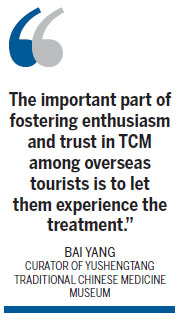
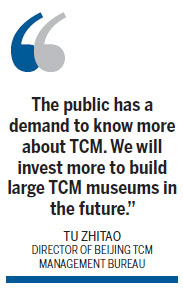
(China Daily 08/20/2014 page22)
- Database to track fugitives overseas
- Family size violation fees to stay
- Draft plans for regional, circuit courts approved
- Protest founders poised to surrender in Hong Kong
- Taiwan leader decides to resign as party chairman after election defeat
- 154 'foxes' surrender before deadline
- Tolerance ends, HK chief vows
- Expansion of pollution monitoring on the way
- AIDS pandemic has reached tipping point, campaigners say
- Spot corruption, send a text

